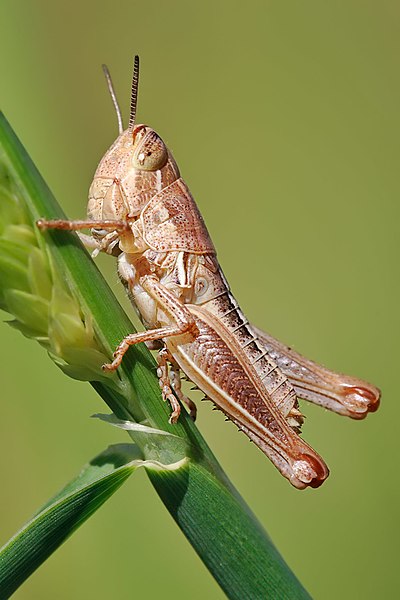Although much we know about feeding pet birds applies to a wide range of species, a great deal is specific to certain species, families or other groupings. Often, it is important to think in terms of specific bird – i.e. “Peter’s twinspot” as opposed to “finch” – if we are to provide proper nutrition to our collections.A wide range of species-specific bird diets are now available to assist us in this task. As always, research concerning individual species is vital…please check out our extensive line of bird books for advice.
Today and in future articles I’d like to cover some nutritional concerns that commonly arise among various types of birds.
African Gray Parrot (Psittacus erithacus)
Hypocalcaemia
The ever popular African gray is prone to calcium deficiencies, which most commonly appear at age 2-5. Most birds afflicted with hypocalcaemia metabolize bone calcium in an effort to maintain adequate blood levels of this important mineral. African grays, however, seem unable to do this and instead become racked by seizures (tetany) when calcium is lacking; veterinary intervention is necessary.
Hypovitaminosis A
Vitamin A deficiency is not uncommon in African grays. The excess keratin production that is associated with this condition causes the eyes to dry and the third eyelid (nictitating membrane) to thicken. Birds so afflicted also sneeze, apparently in an effort to clear keratin from the nasal passages.
Sinusitis
Mucus ceases to move normally between the nasal passages, resulting in blockages and breathing difficulties. As described above, this is sometimes related to a Vitamin A deficiency.
The role of Vitamin C in reducing sinusitis symptoms and of zinc in transporting Vitamin A is also being investigated.
Feather Plucking
Like other highly intelligent birds, African grays become bored easily. Feather plucking is often associated with boredom, but there is some evidence that low levels of the amino acid arginine may play a role as well. To rule out a nutritional problem, be sure to provide your parrot with a sound diet and a vitamin/mineral supplement.
Food can also serve as an important factor in reducing boredom…consider different ways of making your bird work for its meals, and offer sticks of tough vegetables that the parrot can manipulate and shred. Our many foraging toys are invaluable in providing stimulating feeding opportunities.
Indian Hill Myna (Gracula religiosa)
Hemochromatosis (Iron Storage Disease)
For some reasons, these wonderfully talented mimics seem especially prone iron build-up in the liver and other organs. Although nutritional links have been identified, there is much we still need to learn. Please see my article Iron Storage Disease and Citrus Fruit for more information.
Although primarily frugivorous, mynas relish animal foods as well. Beef and other meats are often high in iron and best avoided until all the evidence is in. Stay with hard boiled eggs and insects instead…canned invertebrates are a great option.
Cleaning Considerations
Like most fruit-eating birds, mynas have big appetites and process food rapidly….defecation may occur within 20 minutes of eating. This, combined with high activity levels and the production of moist droppings, renders cage sanitation a vital issue. Be sure to clean all cage surfaces daily with a bird-safe sanitizer to prevent the buildup of harmful bacteria.
Further Reading
Please see my articles on the Natural History and Care of Hill Mynas and African Gray Parrots for more information.
Images referenced from Morguefile.
 That Bird Blog – Bird Care and History for Pet Birds
That Bird Blog – Bird Care and History for Pet Birds

 Amethyst Starlings in Captivity
Amethyst Starlings in Captivity
 “Meadow Plankton” is a term given the astonishing array of invertebrates that may be captured by sweeping a long-handled net through tall grass. Ranging in size from tiny aphids to large grasshoppers, there will be something for any bird you might keep.
“Meadow Plankton” is a term given the astonishing array of invertebrates that may be captured by sweeping a long-handled net through tall grass. Ranging in size from tiny aphids to large grasshoppers, there will be something for any bird you might keep. In addition to thrilling bird owners for the past 100 years or so, it seems that the males’ spectacular plumage plays an unexpected role in Gouldian finch behavior as well. Wild Gouldian finches are unique in possessing heads that may be red, black or yellow in color. Red-headed males dominate all others, with yellow headed males being at the bottom of the pecking order.
In addition to thrilling bird owners for the past 100 years or so, it seems that the males’ spectacular plumage plays an unexpected role in Gouldian finch behavior as well. Wild Gouldian finches are unique in possessing heads that may be red, black or yellow in color. Red-headed males dominate all others, with yellow headed males being at the bottom of the pecking order. Also known as the Barbary, ring-necked or domestic dove, ring doves (Streptopelia risoria) are among the most popular and confiding of all pigeon-like birds. Although given species status, this quiet, 9 inch-long bird may be a mere variant of the African collared dove (S. roseogrisea), which was domesticated nearly 3,000 years ago. Those in the pet trade likely also carry the genes of the Eurasian collared dove (S. decaocto) and the red-eyed dove (S. semitorquata), rendering them truly unique.
Also known as the Barbary, ring-necked or domestic dove, ring doves (Streptopelia risoria) are among the most popular and confiding of all pigeon-like birds. Although given species status, this quiet, 9 inch-long bird may be a mere variant of the African collared dove (S. roseogrisea), which was domesticated nearly 3,000 years ago. Those in the pet trade likely also carry the genes of the Eurasian collared dove (S. decaocto) and the red-eyed dove (S. semitorquata), rendering them truly unique.